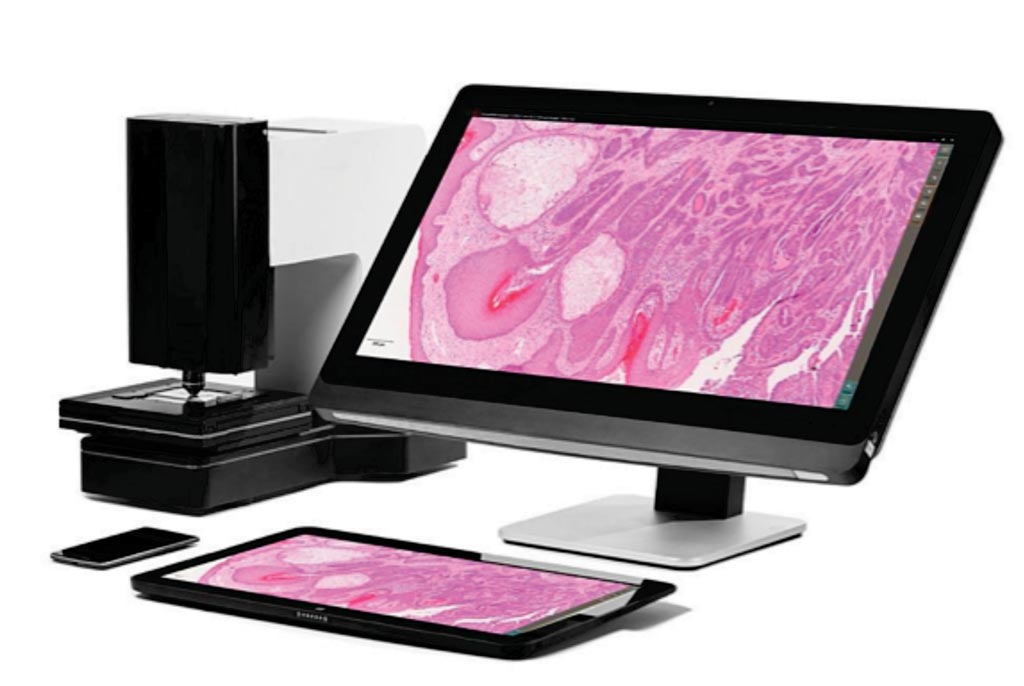Colorectal Carcinoma Tumor Budding Automatically Evaluated
By LabMedica International staff writers
Posted on 10 Sep 2018
Tumor budding, meaning a detachment of tumor cells at the invasion front of colorectal carcinoma (CRC) into single cells or clusters has been shown to correlate to an inferior clinical outcome by several independent studies.Posted on 10 Sep 2018
However, the application of tumor budding by manual evaluation in routine pathology is hampered due to the use of several slightly different assessment systems, a time-consuming manual counting process and a high inter-observer variability.

Image: The M8 serves as a dual microscope and scanner with all features accessible via a touch screen computer, making it a truly digital microscope (Photo courtesy of PreciPoint).
Pathologists led by their colleagues at the University Medical Centre Mannheim (Mannheim, Germany) retrieved 20 whole-slide tissue specimens of formalin-fixed paraffin-embedded tumor tissue and tissue microarray (TMAs) of tumor tissue from the Medical University of Graz (Graz, Austria). These cases belong to a previously published patient cohort of 381 patients (166 males, 215 females; median age 70.1 years).
The team combined classical segmentation methods (like morphological operations) and machine learning techniques (k-means and hierarchical clustering, convolutional neural networks) to reliably detect tumor buds in colorectal carcinoma samples immunohistochemically stained for pan-cytokeratin. As a possible application, they tested it on whole-slide images as well as on tissue microarrays (TMA) from the clinically well-annotated CRC cohort. The sequential sections were digitalized as whole-slide images (WSI) using a digital microscope and M8 scanner (PreciPoint GmbH, Freising, Germany).
The scientists reported that their automatic tumor budding evaluation tool detected the absolute number of tumor buds per image with a very good correlation to the manually segmented ground truth. Furthermore the automatic evaluation of whole-slide images from 20 CRC-patients, they found that neither the detected number of tumor buds at the invasion front nor the number in hotspots was associated with the nodal status. However, the number of spatial clusters of tumor buds (budding hotspots) significantly correlated to the nodal status. TMAs were not feasible for tumor budding evaluation, as the spatial relationship of tumor buds (especially hotspots) was not preserved.
The authors concluded that on the basis of a combination of image processing and machine learning, they found that not the absolute number of tumor formations classified as “tumor buds” within the infiltrative region but rather their spatial arrangement in significant hotspots and especially the number of such hotspots is clinically meaningful. Consequently, the advice for the surgical pathologist is to focus more on the spatial distribution (as kind of pattern diagnosis), rather than on the absolute number, of tumor buds. The study was published on August 28, 2018, in the journal Diagnostic Pathology.
Related Links:
University Medical Centre Mannheim
Medical University of Graz
PreciPoint














